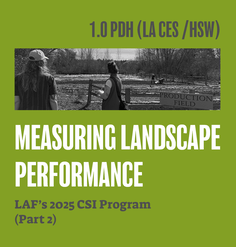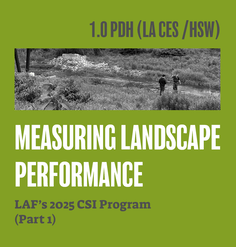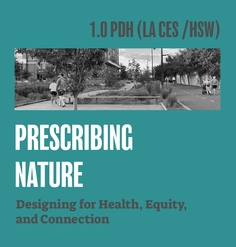Virtual Reality in Landscape Architecture
This webinar is part of an emerging professional webinar series, curated by the LAF Olmsted Scholars Network. The series covers topics of particular interest to emerging landscape architects such as professional journeys, alternate modes of practice, and design innovation.
Recording from live webinar on 4/12/2019
Virtual Reality in Landscape Architecture
Advancements in virtual reality technology have the potential to make many positive impacts on the work of landscape architects. In this webinar, three pioneering landscape architects discuss how they are exploring the use of visualization technologies to create new forms of representation, analysis, and speculation. From site analysis to design iteration to client communication, this new tool has a lot to offer the discipline.
PRESENTERS
Bradley Cantrell, ASLA, FAAR
Chair and Professor of Landscape Architecture, University of Virginia
Learning about emerging technologies is critical to the education of future design leaders. New responsive technologies have the capacity to affect how landscape architects design and communicate landscape processes. Through research and practice examining the role of computation and media on design, Bradley develops methodologies to take advantage of the benefits that new developments offer. He is also the author of two books addressing visual representation in landscape architecture.
Andrew Sargeant
2016 LAF Olmsted Scholar and 2018-2019 LAF Fellow
Landscape Designer/Visualization Specialist, Lionheart Places
Immersive technologies, specifically augmented reality and virtual reality, provide greater potential than all previous rendered visualizations of landscape. Although traditional means allow us to prototype, with immersive tech, designers are provided a more direct experience by being able to walk, fly and interact with their prototypes, either in a VR or AR environment. Andrew's research focuses on creating solutions for landscape architects to use in the design of and advocacy for public space.
Matthew Seibert
Assistant Professor of Landscape Architecture, University of Virginia
The game engine—the software developed for the production of videogames—can be employed as a newly accessible, uniquely powerful, and culturally significant form of landscape representation. Its versatility in application to the design process, from site analysis to design iteration to client communication, and in building to multiple platforms, from desktop simulator to virtual reality to augmented reality, provides for new readings of landscape and thus new possibilities of landscape practice.











